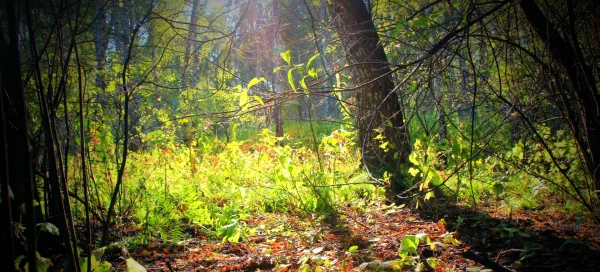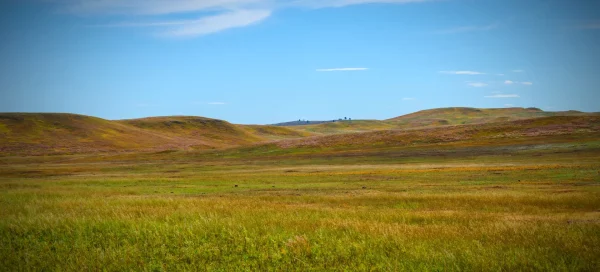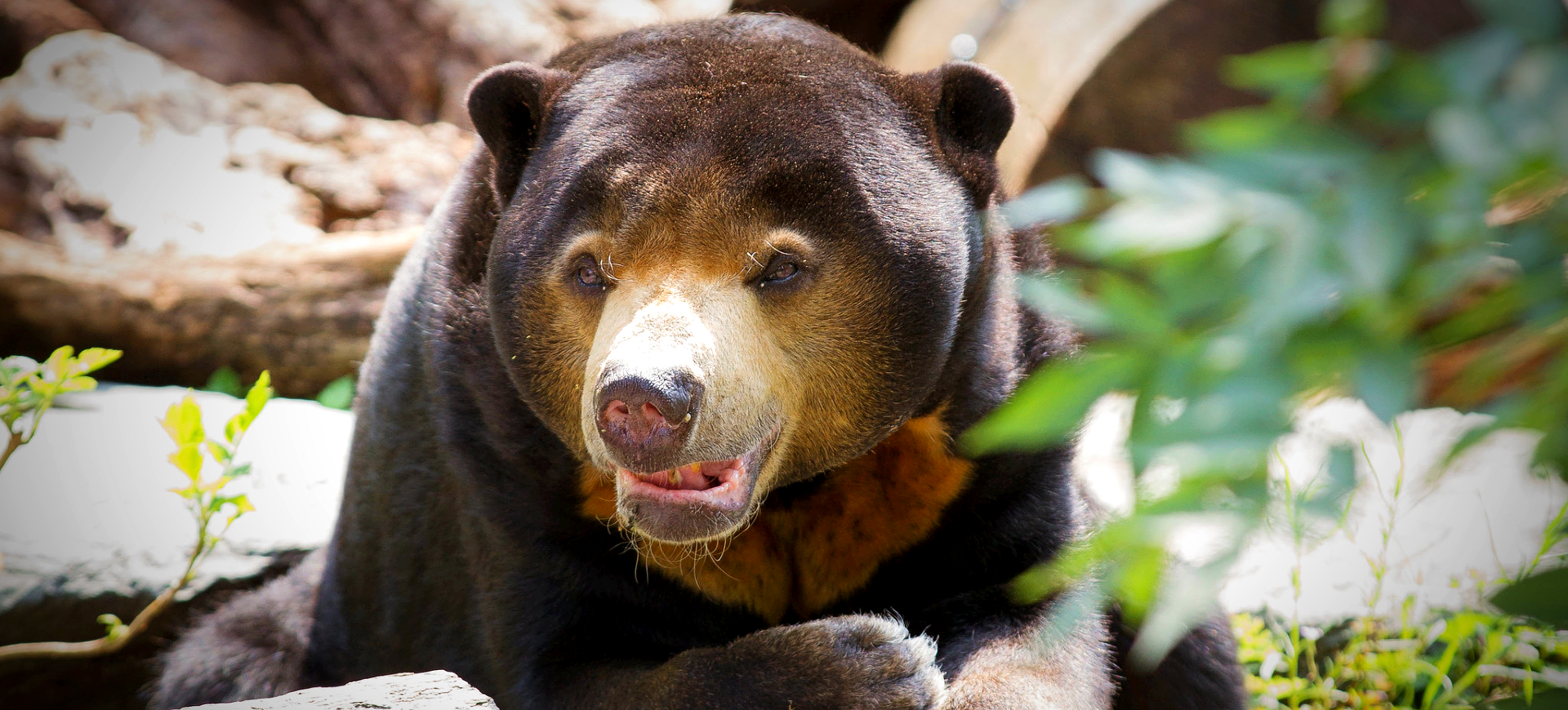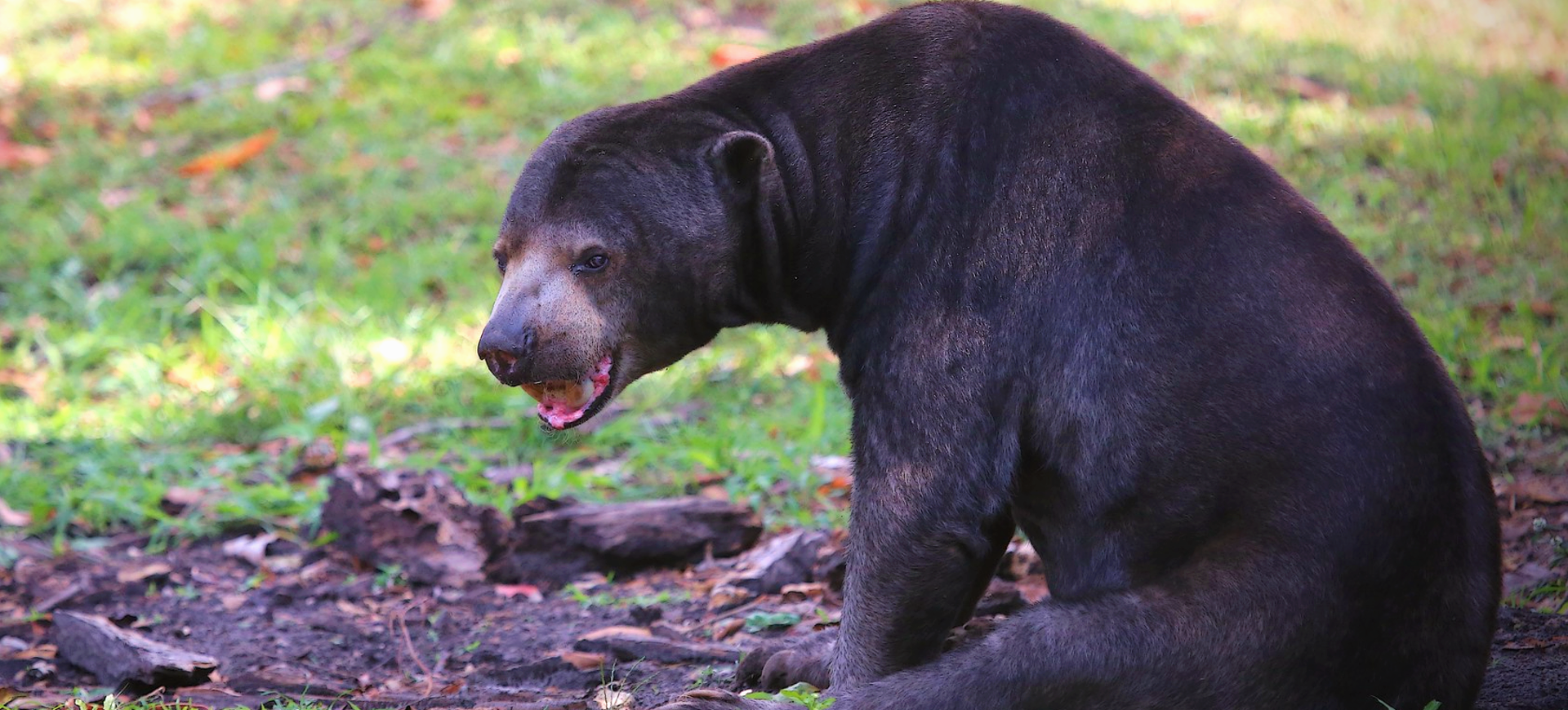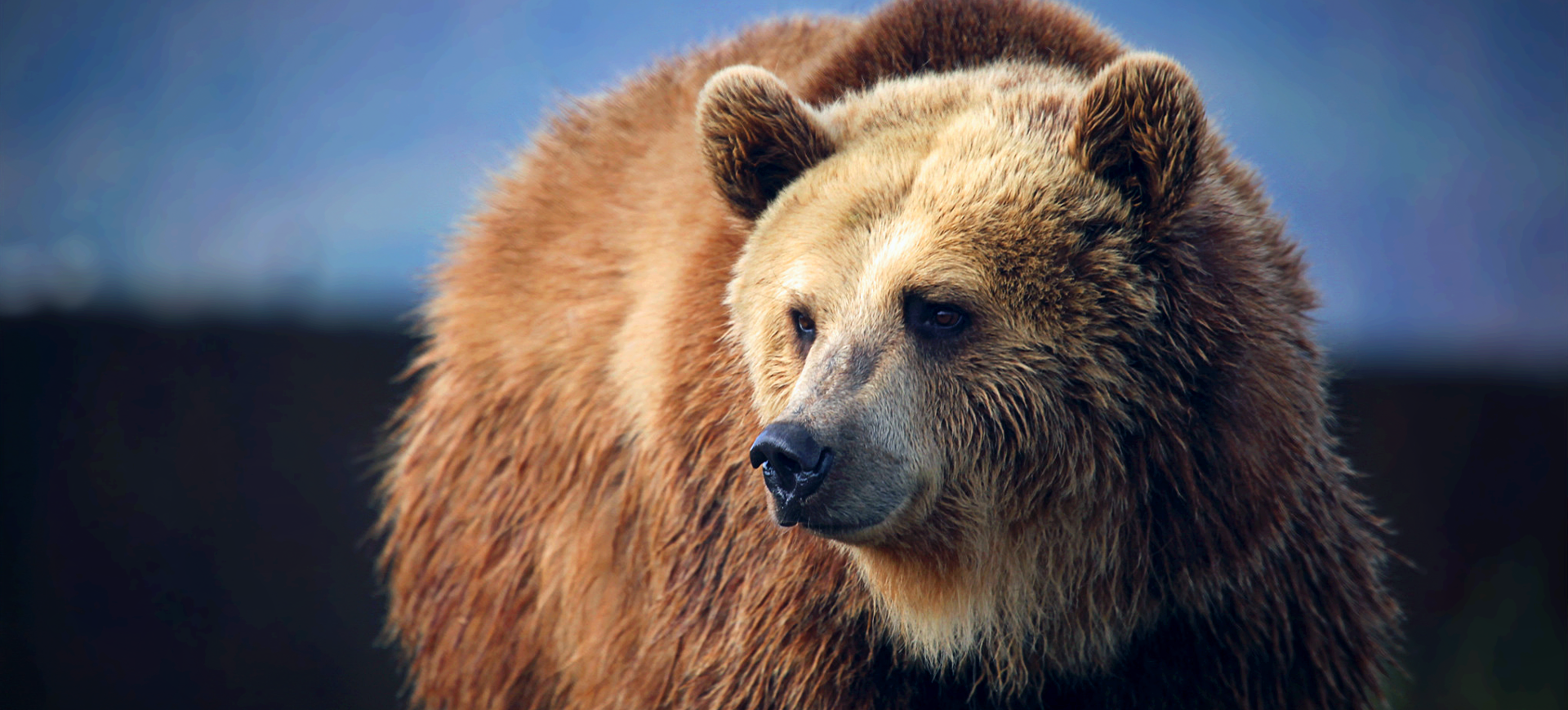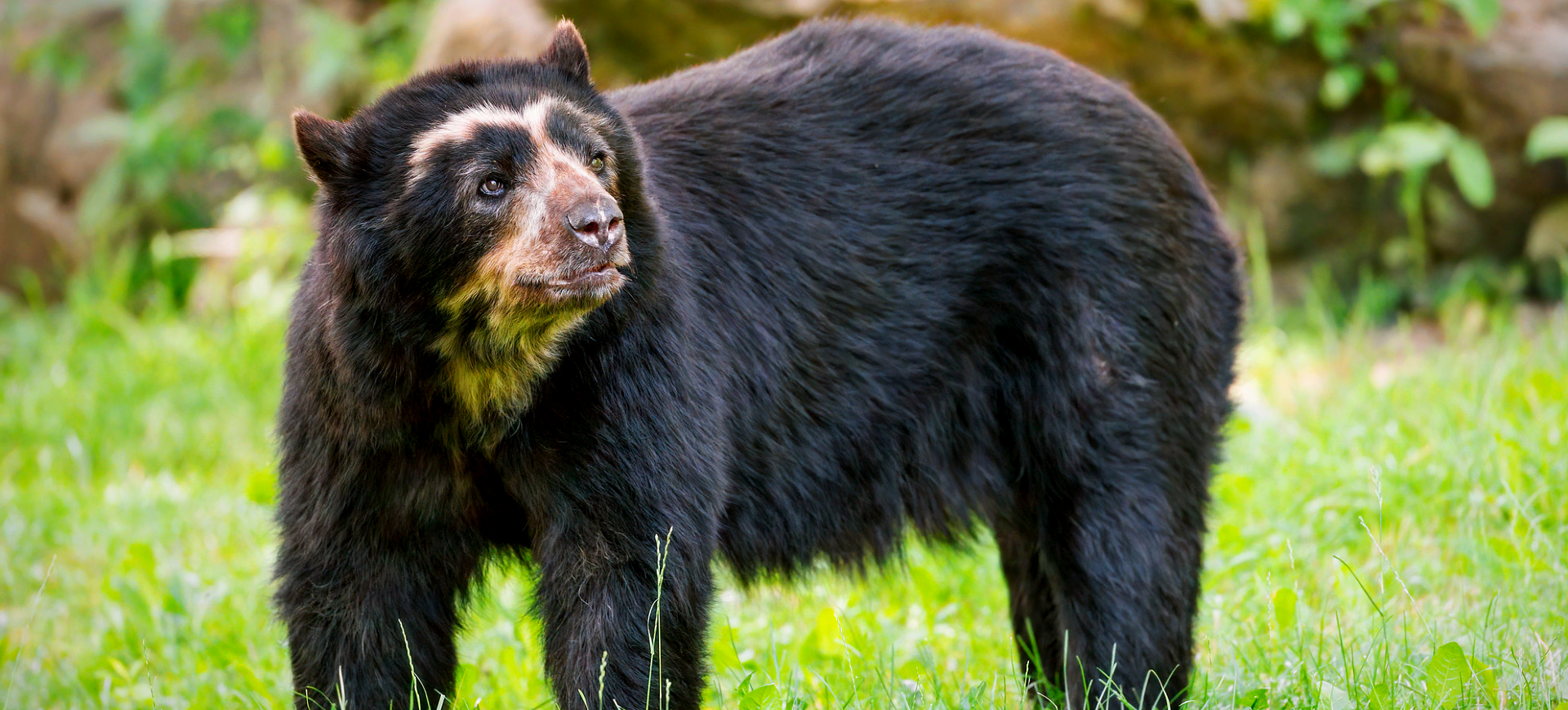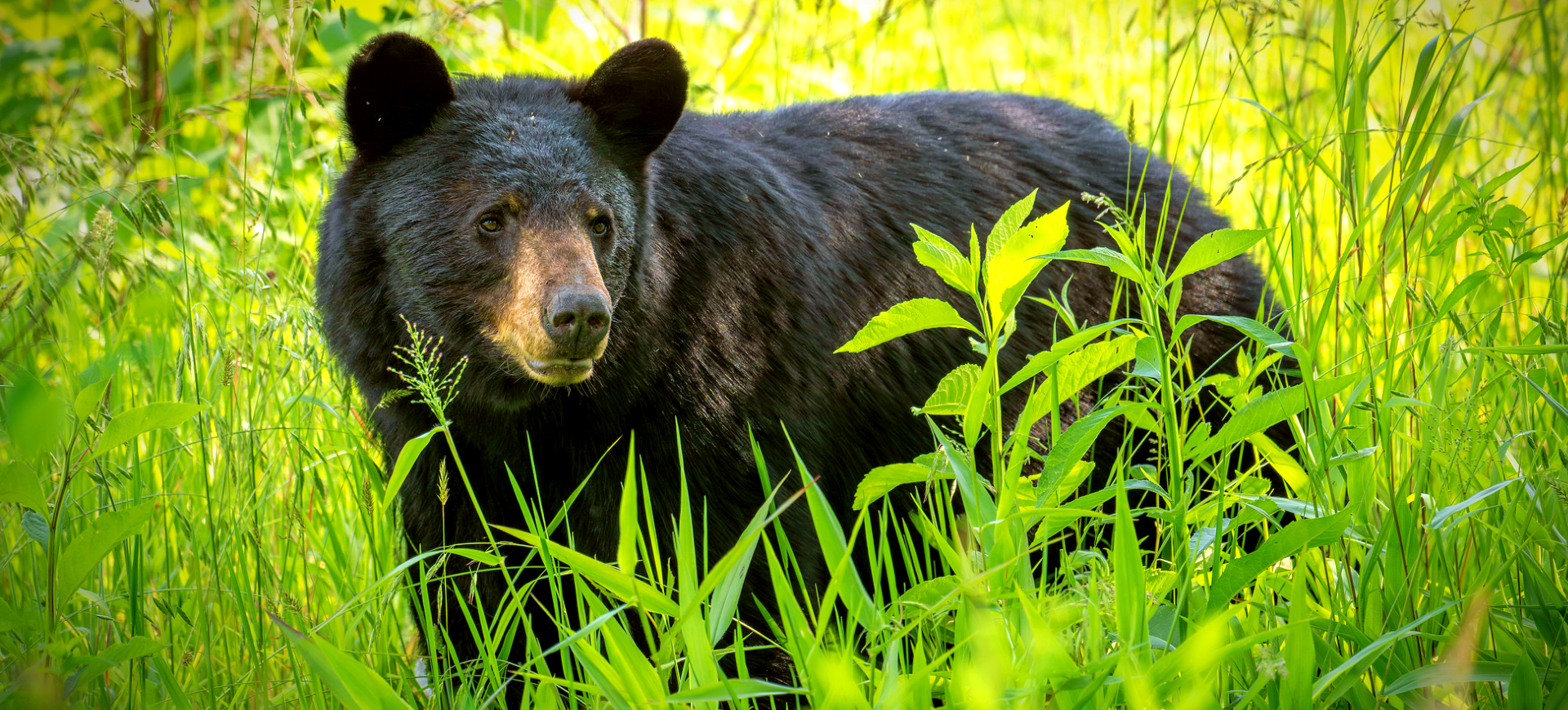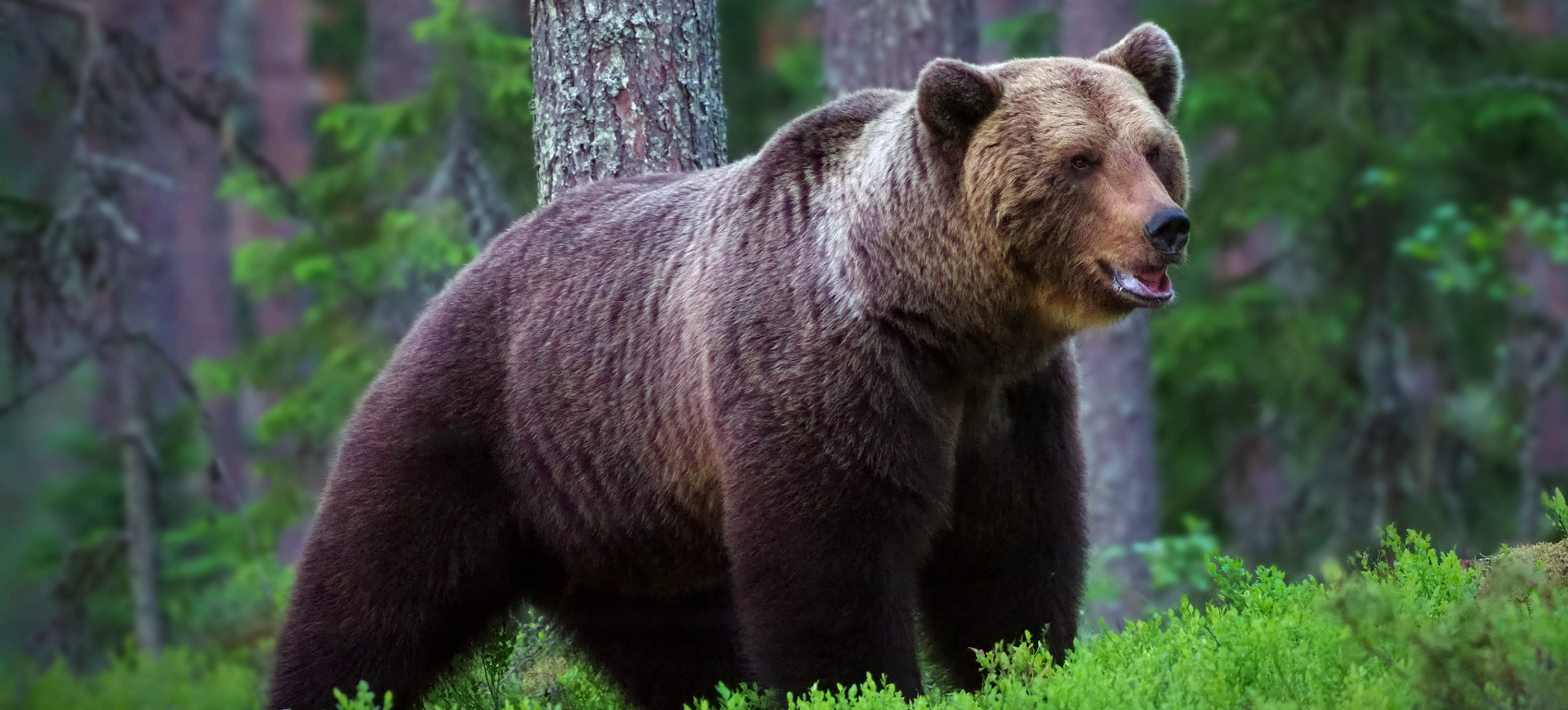Overview
The Asiatic black bear, also known as the moon bear, is a medium-sized bear native to Asia. It is characterized by its black fur and distinctive white or cream-colored crescent-shaped marking on its chest, which gives it the nickname “moon bear.” Asiatic black bears are primarily arboreal and exhibit remarkable climbing abilities. They often spend significant time in trees to forage or rest. They are known for their adaptability, occupying various habitats, from tropical forests to mountainous regions.
These bears are omnivorous and exhibit seasonal dietary shifts, consuming fruits, nuts, insects, small mammals, and some vegetation. They are nocturnal to crepuscular, with their activity levels often influenced by food availability and human disturbances. Solitary by nature, except during mating season or when mothers are with their cubs, they are territorial animals. Despite their generally shy disposition, Asiatic black bears can become aggressive if threatened or cornered, especially near their young.
The Asiatic black bear faces significant conservation challenges due to habitat loss and poaching, primarily driven by the illegal wildlife trade. Their gallbladders and bile are highly valued in traditional medicine, especially in parts of East Asia, leading to population declines. Conservation measures, such as anti-poaching laws and habitat protection, are in place, but enforcement is inconsistent across their range. These efforts are critical to preserving their populations, which are declining across most habitats.
Current distribution:
Asiatic Black Bears boast an impressive geographic distribution that spans the vast expanse of the Asian continent. Their presence extends from Iran in the west, encompassing the sprawling forests of Russia and moving into the far reaches of China, Korea, and Japan. Additionally, the bears have made their home amidst the rugged terrain of the Himalayan region, marking their presence in countries such as India, Nepal, Bhutan, and eastern Afghanistan. This widespread distribution demonstrates the species' adaptability to varying environments and climates.
However, despite this extensive range, the distribution of Asiatic Black Bears is not uniform but rather patchy and fragmented. The primary reasons behind this fragmentation are human-induced habitat loss and activities. Southeast Asian countries, including Vietnam, Laos, Cambodia, and Thailand, host these bears, but these populations are often isolated due to deforestation and human settlement expansion. This fragmentation represents a significant challenge for the conservation of the species, as isolated populations are more vulnerable to local extinctions and have limited genetic exchange.
Physical Description:
Asiatic Black Bears are characterized by a muscular build and are covered with dense black fur, which is longer in the winter and shorter in the summer. The fur on the neck, shoulders, and chest is particularly long, forming a mane-like appearance. A distinct white or cream-colored V or crescent-shaped mark on their chest gives them the name ‘moon bear.’ They also have a light-colored snout and a light patch on their chin.
The bears have solid and muscular forelimbs and sharp, curved claws, both adaptations for climbing trees. Their ears are large and prominent, distinguishing them from other bear species. The males, being more significant than the females, show sexual dimorphism.

Lifespan: Wild: ~25 Years || Captivity: ~30 Years

Weight: Male: 220-440 lbs (100-200 kg) || Female: 110-275 lbs (50-125 kg)

Length: Male: 4.6-6.5 ft (1.4-2 m) || Female: 4.3-5.2 ft (1.3-1.6 m)

Height: Male: 2.3-3 ft (0.7-0.9 m) || Female: 2-2.6 ft (0.6-0.8 m)

Top Speed: 30 mph (48 km/h)
Characteristic:
Native Habitat:
Asiatic Black Bears are primarily found in forested habitats, ranging from tropical rainforests to temperate broadleaf and mixed forests. They are also found in some mountainous regions, reaching altitudes up to 12,000 feet. These bears strongly prefer rugged terrains with dense cover, which provides them with ample food resources and refuge from predators.
The bears are adept climbers and spend significant time in trees. They even build tree nests or platforms to rest during the day, forage, eat, and sometimes hibernate. The habitat of Asiatic Black Bears also overlaps with that of other bear species like brown bears, and sun bears in some regions.
Climate Zones:
Biogeographical Realms:
Continents:
Countries:
Diet:
Diet & Feeding Habits:
Asiatic Black Bears are omnivorous, with a diet that consists of a mix of plant and animal matter. They consume various foods, including fruits, berries, nuts, leaves, insects, small mammals, and carrion. They are especially fond of acorns, chestnuts, and other nuts and seeds that are abundant in their habitat and are also known to raid beehives for honey and larvae. In certain regions, they have been observed to feed on cultivated crops like corn and other grains.
Asiatic Black Bears are opportunistic feeders, often changing their diet according to the seasonal food availability. They can stand on their hind legs to reach high-hanging fruits and climb trees to forage for food. They have sharp, curved claws that aid them in digging for roots, bulbs, and insects.
Mating Behavior:
Mating Description:
Asiatic Black Bears have a promiscuous mating system, with males and females having multiple partners. The mating season typically occurs from June to August, and during this period, males seek out females in estrus, often engaging in intense fights with rival males for mating rights. After mating, the fertilized eggs do not implant and develop immediately but undergo delayed implantation, similar to polar bears.
Females give birth during their winter dormancy, usually to a pair of cubs, in dens that they construct in rock crevices, under tree roots, or sometimes high up in tree nests. The cubs are born blind and hairless but develop quickly, remaining with their mother for about two years, during which they learn essential survival skills.
Reproduction Season:
Birth Type:
Pregnancy Duration:
Female Name:
Male Name:
Baby Name:
Social Structure Description:
Asiatic Black Bears, like most bear species, demonstrate solitary tendencies. They lead mostly solitary lives, frequently wandering alone in their expansive home territories. The exception to this individualistic behavior typically occurs when females are rearing cubs. During this time, mother bears are accompanied by their offspring, investing significant time and energy in teaching them essential survival skills and protecting them from potential threats. These tight-knit family units persist until the cubs are old enough to venture out independently, usually around two years of age.
The mating season is another instance when Asiatic Black Bears temporarily deviate from their solitary behavior. During this period, males actively seek out females and may form temporary pairings. The home ranges of adult males often overlap with those of several females, which can lead to intense competition among males for mating rights. While they generally exhibit a passive attitude towards each other outside of the mating season, male bears may become particularly aggressive, engaging in fierce battles to secure a partner. This aggression subsides post-mating season, and the bears return to their customary solitary lives.
Groups:
Conservation Status:
Population Trend:
Although widely distributed across Asia, Asiatic Black Bears are experiencing a decline in their population. Precise estimations of their numbers are challenging due to the vast and fragmented nature of their range, but experts believe that the wild population is currently around 50,000 to 60,000 individuals. This downward trend is a consequence of multiple adversities that these bears face, most prominently habitat loss due to deforestation, which pushes them closer to human settlements.
The issue is compounded by illicit hunting practices aimed at the black market trade of bear parts, a dark industry driven by demand for traditional Asian medicines and exotic food products. Bear gallbladders and paws are particularly sought after, leading to a rampant poaching problem. Simultaneously, the increasing instances of human-wildlife conflicts, often related to the bears raiding crops or venturing into populated areas, have caused further reductions in their numbers as they are frequently killed in retaliation.
Population Threats:
A range of threats besieges the Asiatic Black Bear’s existence, the foremost of which is the widespread destruction of their natural habitats. Accelerated deforestation and the conversion of lands for agriculture or human settlements have dramatically shrunk their home range. Consequently, these bears are often pushed into marginal territories, increasing the likelihood of human-bear encounters and escalating conflict situations.
Illegal poaching constitutes another significant threat to the population of Asiatic Black Bears. Hunted for their gallbladders and paws, they are victims of a relentless trade in bear parts, predominantly fuelled by traditional Asian medicine’s demands. The problem is exacerbated by instances where bears are killed out of fear of attacks on humans or in retaliation for raiding crops. On top of these immediate threats, climate change is an emerging concern, which could further alter and reduce their suitable habitats.
Conservation Efforts:
Given the Asiatic Black Bears’ multifaceted threats, conservation strategies have been developed to protect and support this vulnerable species. One of the central pillars of these efforts involves bolstering anti-poaching measures and enhancing legal protection to curb the illicit trade of bear parts.
Simultaneously, habitat conservation plays a crucial role in these efforts. Strategies include maintaining and increasing the bear’s habitat through reforestation efforts and establishing protected areas where the bears can thrive without human interference. Additionally, specific programs focus on mitigating human-bear conflicts. These include the provision of compensation for crop damages to local communities and the promotion of bear-proof storage methods. International trade in Asiatic Black Bears is regulated by CITES, which lists the species in Appendix I, thereby prohibiting commercial trade.
Additional Resources:
Fun Facts
- The distinctive V or crescent-shaped mark on their chest has earned them the name ‘moon bear.’
- They are excellent climbers and spend a lot of time in trees, sometimes even sleeping there.
- Asiatic Black Bears have a diverse vocal repertoire, with sounds ranging from roars to grunts and whines.
- They are known to walk upright on their hind legs for over a quarter of a mile.
- Despite their size, they are good swimmers.
- They have loose skin around their neck, which protects them during fights.
- During food scarcity, they can survive by eating bark and wood.
- They are known to cover large distances, with one individual recorded to have traveled over 135 miles.
- They can eat up to 44 pounds in one day when food is abundant.
- Their paws are dexterous, and they can even unscrew jars.






